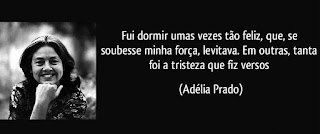I Humbly Offer This Poem To Mother Russia...
Thank You For All You Do For My Family and The World. I Truly Love Thee...
RUSSIA
I was not left for no reason,
It was meant to be
what I wanted to feel like,
it felt like,
to be left,
within...
That was the only way inside this universe.
The place where only who enters,
to be love,
is ultimately betrayed.
Without this unique and powerful ingredient,
no soup can be completely a healthy soup.
No one can exist without it.
I stirred it for twenty years after I left my Papa's land...
Knowing this alchemized feeling,
the one he carries.
Nostalgic, in his eyes, the love for
the peace of his people and family...
I knew to spot it everywhere.
I was never left behind,
I was let to be...
I was
only truthfully,
if I could see it.
Did I want to free you too?
From my own notion of betrayals,
your notion of been taken from
is the same side of
our token.
The other side,
if never spoken to me,
I voiced your silence...
Eternally.
I ask not for forgiveness
but, for an end to both our needs.
The end of all charity.
I may have passed through you
like a violent wave,
but you left me there before that...
Didn't you, 'Putin'?
I went back to look you square in the eyes,
in the face, and really EMBRACE
the American you never were...
Without me.
The land you have never visited,
the people you have forgotten...
As I listen.
All that in two slaps
and all the beatings you
won from me...
That was finally my turn.
You finally gave it to me.
Exactly as you deserved it...
I was not left at last,
and you my love,
are NEVER
without me...
Djanine Queiroz Putin Stalin
(Listening to Zaz - Veux)
Poem Written On May 11th 2022
I'm overwhelmed by this presence... As I learn to stay with my core, your gentle smile enters my eyes, your approach fills my cracks with joy and my breathing has changed since I saw it for the first time... The highly sensitive understands what's not said, feels what's underneath, pulses thick and thin with the wave patterns of every encounter...
Pulling from every direction is this sound, this presence in every little gesture pulling and saying; -I'm there and you're here...
"We’ve been on a roll since
Your breath first graced my skin
This fire unfolds steadily
It keeps me warm within"
On my mind, the still picture of your face isn't so still... It has told me many stories and convinced me to trust your guiding, it has kept me company, every night, just before I fall asleep.
And when I wake up every morning, it invites me to reconsider my old habits and to remember who I am...
-Dja Putin Stalin


















 Dr. Emoto’s water blessed by gratitude (left) and Holy Water (right)
Dr. Emoto’s water blessed by gratitude (left) and Holy Water (right) Members of the Desana Tribe
Members of the Desana Tribe Blessing water with sacred tobacco
Blessing water with sacred tobacco The Desana Tribe of the Amazon
The Desana Tribe of the Amazon Learning the practice of deep listening
Learning the practice of deep listening Indigenous Australians have a deep connection to nature through listening
Indigenous Australians have a deep connection to nature through listening
 We can positively affect our water before we drink it
We can positively affect our water before we drink it
